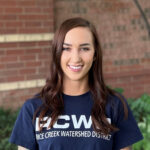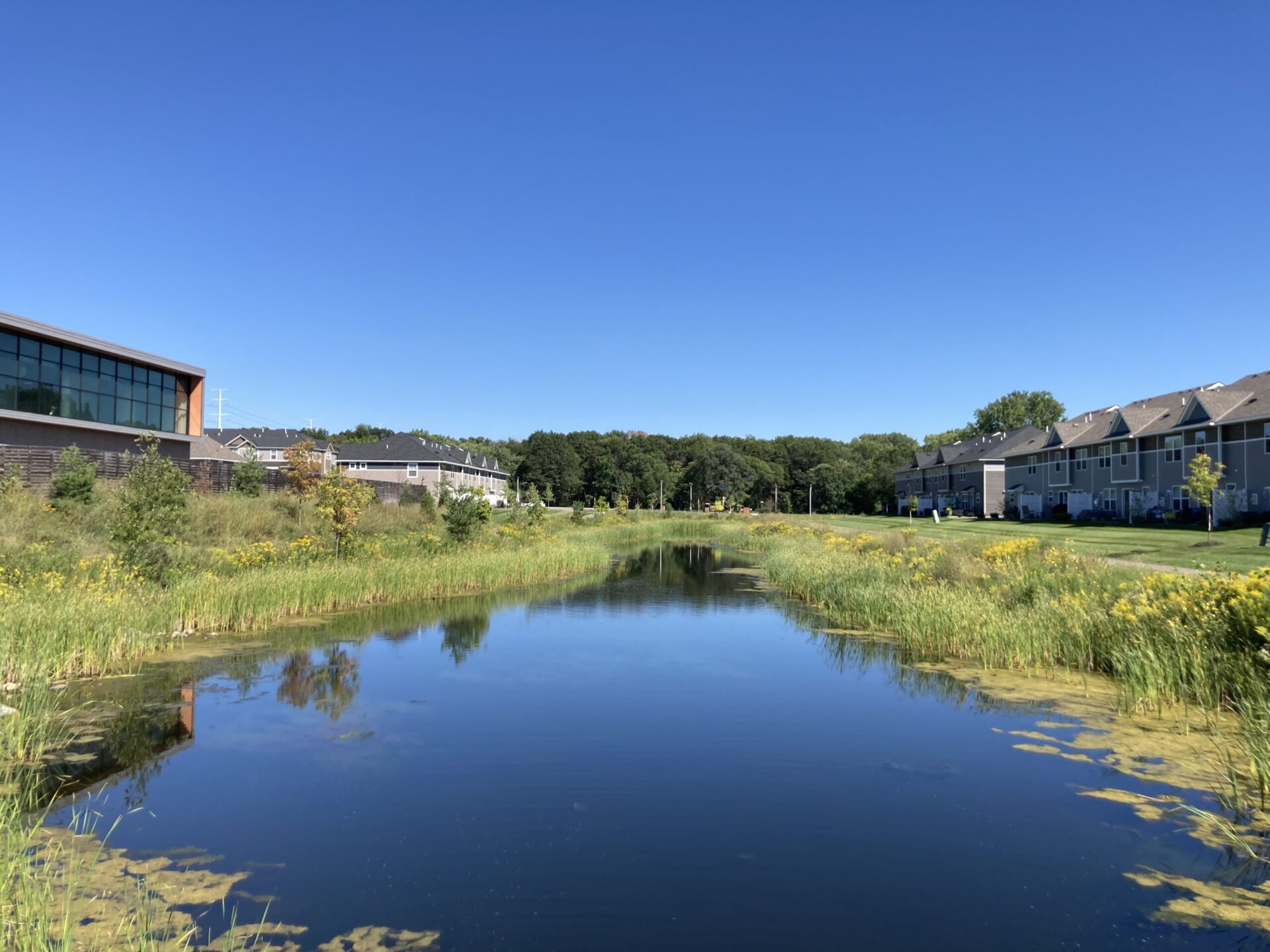
Home Owner Associations (HOAs)
There are many Home Owner Associations (HOAs) in Rice Creek Watershed District. HOAs are usually responsible for maintaining stormwater systems like stormwater ponds and rain gardens to prevent flooding and protect water quality. Proper upkeep is essential, and many resources are available to help HOAs manage these structures effectively.
An HOA, managed by resident homeowners, oversees the management of a community. Many HOAs have stormwater features like rain gardens and ponds that were installed by developers to fulfill permit requirements, aiming to reduce runoff, protect water quality, and minimize flood risks. It’s crucial for HOA members to understand their responsibilities, especially when the developer transfers ownership of shared spaces and stormwater features to the HOA. Ongoing maintenance, including the stormwater features, may be part of the HOA’s responsibilities.
Do you live in the Rice Creek Watershed District?
Confirm your home and association is in the watershed district.
Resources Available for HOA’s and homeowners in these communities:
Created and supported by Washington Conservation District and various partners, grant support from University of Minnesota Water Resources Center, Minnesota Stormwater Research Council, and Minnesota Sea Grant.
HOA Stormwater Education Toolkit available here. It includes fact sheets that cover a range of stormwater and landscape maintenance topics relevant to HOAs.
Responsibilities and Concerns for HOAs
Some common concerns and questions HOA residents have regarding stormwater features and property obligations include:
- Outlot BMPs vs. Private Property: Outlot BMPs are usually owned and maintained by the HOA or the city, while BMPs on private property are the responsibility of the landowner.
- Maintenance of HOA Stormwater Features: Typically, the HOA is responsible for maintaining stormwater features, unless they are owned by the city or there is an alternative agreement in place.
- Contacting the Right Authorities: The HOA can reach out to the relevant authorities to learn about maintenance responsibilities and obtain information or plan sets. It’s recommended to hire trained professionals for any necessary maintenance work.
- The HOA can contact the RCWD or the City
- Information or plan sets can be obtained from RCWD or the city. It is recommended to hire a trained professional for any required maintenance work, as RCWD can’t provide recommendations for maintenance companies or organizations.
- Permissions and Permits: HOAs may need permission or permits from the district for conducting maintenance on stormwater BMPs.
- Algae Growth in Stormwater Ponds: Stormwater ponds may turn green due to excess nutrients and pollutants carried by runoff. Prevent excess nutrients by sweeping lawn clippings and fertilizer from sidewalks and driveways.
- Safety Concerns on Stormwater Ponds: Stormwater ponds are NOT safe for activities like skating or playing hockey. Their constantly moving water and high salt content prevent the formation of a solid layer of ice.
- Restrictions on Altering Stormwater Features: HOAs cannot build beaches or install aerators in stormwater ponds.
- Removing BMPs or Filling Rain gardens: Removal or alteration of BMPs or rain gardens depends on their purpose and installation. Some may be protected and require maintenance, while others may have different regulations. It’s best to contact the watershed district for clarification.
- Wetland Responsibilities: Wetland maintenance can fall under the HOA’s or the city’s responsibility. Contacting the RCWD or the city will help determine the maintenance responsibilities for wetland features.
Understanding HOA Obligations
An HOA can request plans and information about wetlands, buffers, stormwater ponds, or public drainage systems from the watershed district. This can help HOA members understand which features are regulated and seek clarification if needed.
Maintenance and Budgeting for Stormwater Features
Property owners are responsible for the cost and maintenance of stormwater features, such as dredging ponds or maintaining rain gardens. Understanding the required maintenance, frequency, and associated costs is essential. In some cases, the city may have an agreement with the HOA for maintenance, and it’s recommended to contact the RCWD or the city for further information.
Fund Your Project with RCWD Grant Programs
If you are a landowner or homeowner, we can help fund improvements to your property that benefit water quality and natural resources such as rain gardens, rain barrels, permeable pavements, shoreline restorations, prairie restorations, and more. FREE site visits and help are available for projects.
Additional Grant Programs and Funding Opportunities Separate from RCWD Programs
- Lawns to Legumes Program
Program run by Blue Thumb and MN Board of Water and Soil Resources, Minnesota residents are eligible to apply for Lawns to Legumes cost-share funding of up to $400 to create pollinator habitat in their yards.
Apply here: Blue Thumb Website
Improve and Protect Water Quality at Your Home
Even if you live in an HOA, you can still manage stormwater at your home (make sure to check with HOA rules). Features like rain gardens, permeable pavements, and rain barrels reduce runoff, curbing erosion and pollution in your area. They also protect your property from flooding, preserving its foundation and landscape. You can also conserve water, lower bills and enhance your property’s value.
A Citizen’s Guide to Stormwater: A comprehensive guide to stormwater and the impacts it has on our environment.
Install Rain Gardens, Grow Native Plants
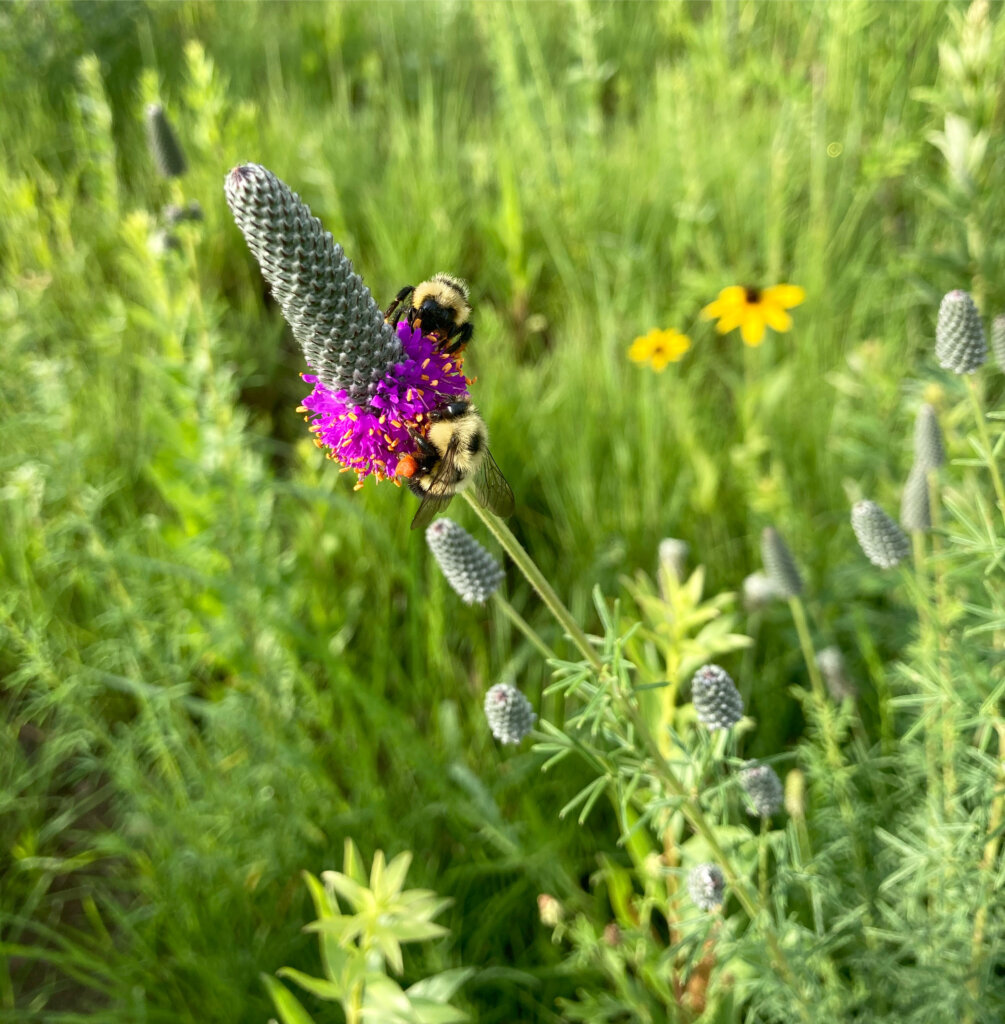
Install rain gardens, native plants, stormwater features, and more at your home! Rain gardens help to capture and filter stormwater runoff, preventing it from carrying pollutants into water bodies. Additionally, native plants require less water, pesticides, and fertilizers, reducing the amount of harmful chemicals that can end up in our water systems.
Learn more about rain gardens with this quick YouTube Video from Anoka County Soil and Water District: Rain Gardens 101
- List of Native plant suppliers, landscapers, and restoration consultants for Minnesota here: Minnesota DNR website
Install a Rain Barrel
Rain barrels are great tools for stormwater management and water conservation at home. By collecting and storing rainwater, they reduce the amount of runoff that flows into storm drains, which can cause flooding and pollution.
Benefits:
- Free and sustainable water source for gardening
- Lawn irrigation, and other outdoor activities
- Reduce water bills by reducing reliance on municipal water supplies
Reduce Turfgrass
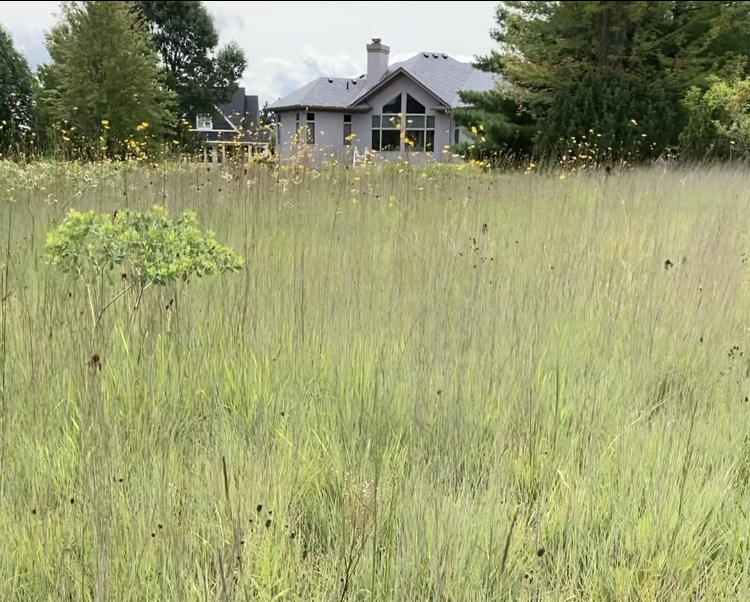
- Replace turf grass with native plants
- Replace traditional turf grass with a “No Mow” seed mix. Requires less mowing and watering.
- Increase areas of landscaping and use native plants instead of traditional cultivar plants
- Replace turf grass with a “Bee Lawn”. Learn more about “Bee Lawns” here: University of Minnesota – Bee Lawns
- Replace parts of your turfgrass with a pollinator garden or rain garden
Installing Permeable Pavements
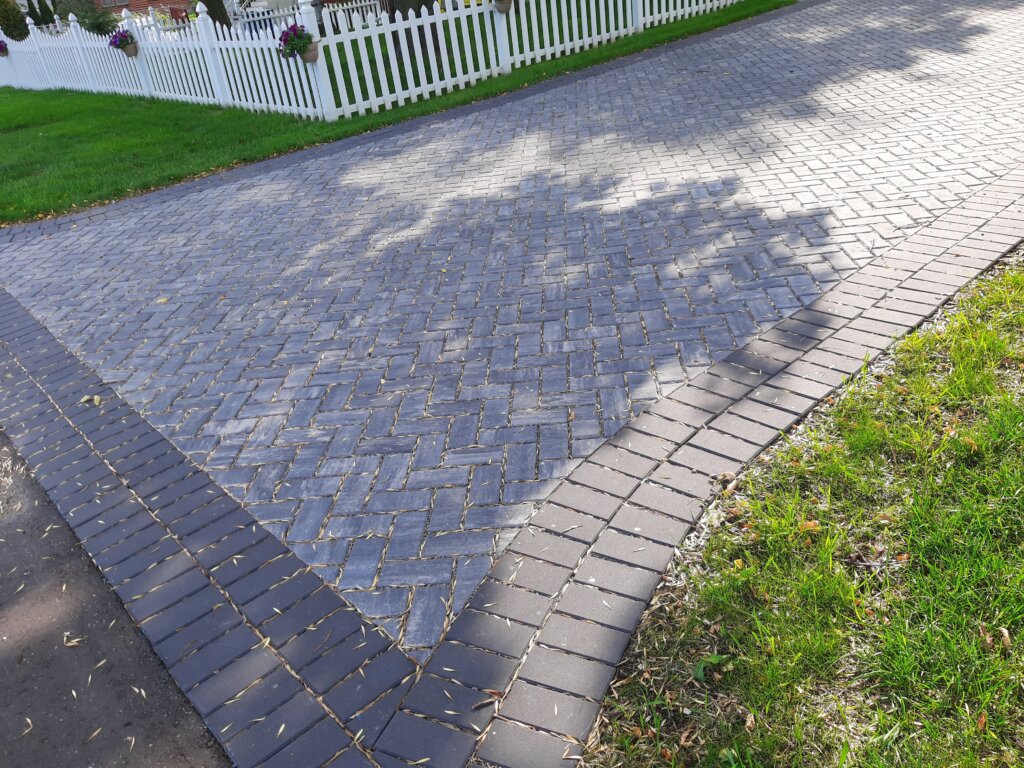
Installing permeable pavements at your home is a great way to counteract the negative effects of stormwater on both your environment and property. They allow rainwater to seep through, reducing runoff and the risk of flooding. By preventing excess water from pooling, you can safeguard against erosion and water pollution, preserving the integrity of your surroundings. Permeable pavements can also enhance the aesthetics of your property.
Your Options for Permeable Driveways, Patios and Paths: Hard surfaces like driveways and pathways are commonly used at our homes but contribute to stormwater runoff and pollution. Permeable pavement offers a solution to mitigate these issues. This video will guide you in understanding your options to make informed choices.
Manage Turfgrass Properly
- MPCA Turfgrass Best Management Practices: MPCA Turfgrass Website
Best management practices (BMPs) for turfgrass from the MPCA/MDA. The purpose of these BMPs is to protect water resources, humans, and insects/pollinators. - MPCA Turfgrass Maintenance Training: MPCA Turf Maintenance Training
The turf grass maintenance training focuses on best management practices (BMPs) for lawn/turf care maintenance. This training is about 6 hours long, including a test. - U of M Turf Best Management Practices: University of Minnesota Turfgrass Website
Best Management practices for turf grass from the University of Minnesota.
Reduce Salt Usage in Winter
- MPCA Smart Salting Program and additional resources: MPCA Smart Salting Website
The MPCA Smart Salting Program provides training and resources to businesses and professionals, promoting responsible salt application practices to minimize environmental impacts and protect water quality during winter road maintenance. - Low Salt No Salt Program: “Low Salt, No Salt Minnesota, an innovative new program that builds community capacity to maintain winter safety while reducing chloride-based deicer use and its associated damages through relationships with local properties managed by resident boards.”
- Chloride in our water information from the MPCA: MPCA Chloride Website
Navigating City Ordinances Regarding Native Plants and Non-Traditional Lawns
Navigating ordinances in your city can be a crucial but sometimes complex task. These ordinances are designed to strike a balance between property owners’ rights and community interests in biodiversity and ecological health. Understanding and complying with these regulations typically involves researching the specific rules and restrictions in one’s city or municipality, which can vary widely.
On the positive side, many cities are increasingly recognizing the benefits of native plants. One example provide below from Roseville, MN. There are many cities around RCWD that support alternative landscaping and yards.
Example Ordinance and Policy from Roseville
1011.03 Landscaping and Screening in All Districts
Section 6 “Alternative Landscape Options: The City (Roseville) encourages the use of special design features such as xeriscaping, raingardens/bioswales, rooftop gardens, native landscapes, integrated pedestrian facilities, and public art.”
2023 MN Legislation Update: Cities must now allow managed natural landscaping to be installed and maintained on all parcels.
Effective July 1, 2023, municipalities are required to allow property owners and occupants to install and maintain managed natural landscapes (native plants).
This legislation offers several significant benefits. It encourages biodiversity by allowing native plant species to thrive, which, in turn, supports local wildlife populations and helps maintain ecological balance. It contributes to improved air and water quality by reducing the need for chemical fertilizers and pesticides. Moreover, native landscapes enhance the aesthetic appeal of urban areas, promoting a stronger connection to nature and overall well-being for residents. These natural landscapes can also be more cost-effective to maintain, as they require less water and maintenance than traditional lawns.
- Article from MN League of Cities regarding new legislation: Focus on New Laws: Managed Natural and Native Landscaping Permitted in Cities
- HF 1830 (House Bill Language)
- Article from WSB regarding new legislation: How Communities Can Prepare for Minnesota’s New Native Landscaping Law
Contact
To get involved and learn more, please contact:
